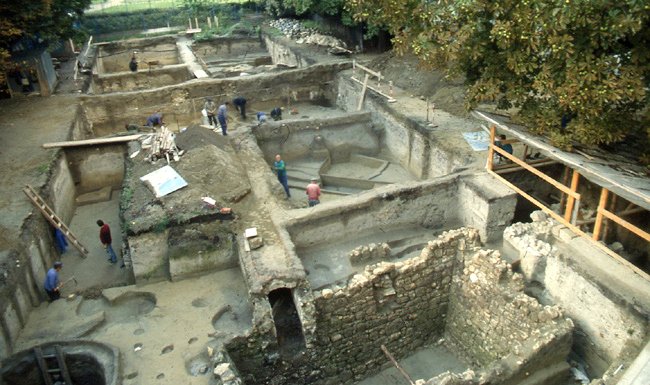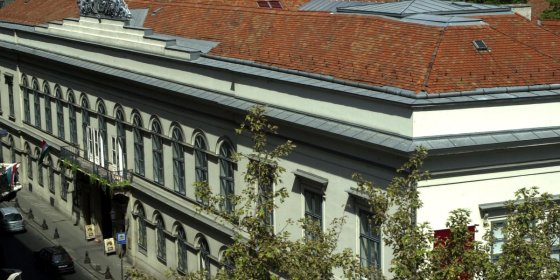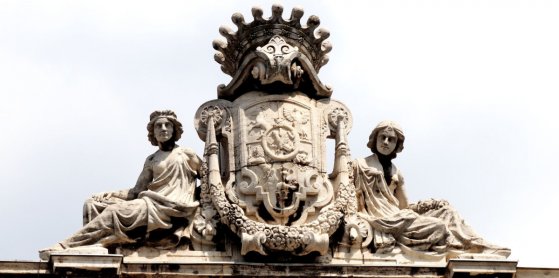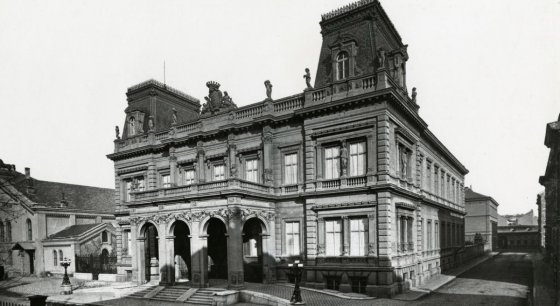 The „intertwined history” of the bridges and the city of Budapest
Which ideas and events have shaped the fate of bridges of Budapest and the cityscape? Alongside many other interesting facts, this question is also answered this newly published book by the Budapest City Archives, which introduces the history of bridges in Budapest.
The „intertwined history” of the bridges and the city of Budapest
Which ideas and events have shaped the fate of bridges of Budapest and the cityscape? Alongside many other interesting facts, this question is also answered this newly published book by the Budapest City Archives, which introduces the history of bridges in Budapest.
Károlyi Palace
 The archaeologists found a village in the city center from the 13th century, and the excavation is now continuing
The archaeologists found a village in the city center from the 13th century, and the excavation is now continuing
June 25, 2022 at 3:00 PM
Archaeologists last worked 25 years ago in the courtyard of the downtown Károlyi Palace, under 16 Károlyi street, on the site of the home of the Petőfi Literary Museum. At that time, among other things, an 11th-12th century cemetery, 23 graves, a 13th century village and the stone cellar and food storage of a Turkish house were excavated. Excavations are now continuing again.
The interiors of Károlyi Palace are being renovated
February 27, 2022 at 7:00 PM
The interiors of the Károlyi Palace in the 5th district, which has housed the Petőfi Literary Museum for sixty-five years, are being renovated. The restoration affects a listed one-storey, classicist building of about 1,730 square meters. As part of this, they will improve public traffic, restore the ornate gate, restore and expand the exhibition spaces, and make the building accessible. In 2000, during the complete renovation of the palace, the architecture that was finalized in the first half of the twentieth century being reversed. The palace is expected to be completed in the fall of 2022.
Lion, sparrowhawk, crane – Ancient symbols from coats of arms tell the story of the past of noble families in the Magnates' Quarter
June 17, 2021 at 9:30 AM
Although in 1947, the communist regime banned the use of noble forenames and badges, including private coats of arms, fortunately, these were not removed from the former aristocratic palaces. Ancient symbols, often dating back centuries, referred to the owner's family, their role in Hungarian history and also served aesthetic purposes on the buildings. In the second half of the 19th century, the Hungarian aristocracy enjoyed building around the National Museum, so several buildings with family coats of arms and their motifs can be found in the quarter. These can be seen in the palaces of the Festetics and Károlyi families in Pollack Mihály Square.
The Károlyi Palace hosted the country's first large-scale exhibition of applied arts
May 18, 2021 at 9:00 AM
Donations were raised in several places throughout the country to alleviate the damage caused by the floods of February 145 years ago and to help the flood victims. Related to these efforts was the exhibition of applied arts presenting the unique treasures of art, which was organised not in a public collection, but in the palace of Count, Alajos Károlyi built behind the National Museum in May 1876.
More articles
 The „intertwined history” of the bridges and the city of Budapest
Which ideas and events have shaped the fate of bridges of Budapest and the cityscape? Alongside many other interesting facts, this question is also answered this newly published book by the Budapest City Archives, which introduces the history of bridges in Budapest.
The „intertwined history” of the bridges and the city of Budapest
Which ideas and events have shaped the fate of bridges of Budapest and the cityscape? Alongside many other interesting facts, this question is also answered this newly published book by the Budapest City Archives, which introduces the history of bridges in Budapest.
 The Bridge Report, which brought a turning point in the history of Budapest
A travel report that changed the history of Pest and Buda, as well as Hungary. The little book contributed to the change of half a thousand years of legal customs and the implementation of an investment of unprecedented size and technical quality. This book was The Bridge Report [Hídjelentés in Hungarian].
The Bridge Report, which brought a turning point in the history of Budapest
A travel report that changed the history of Pest and Buda, as well as Hungary. The little book contributed to the change of half a thousand years of legal customs and the implementation of an investment of unprecedented size and technical quality. This book was The Bridge Report [Hídjelentés in Hungarian].
 Drama on the university wall - The heroic monument was planned 95 years ago
In the constant hustle and bustle of the Egyetem Square in Pest, the students may not even notice the monument that decorates the short section of wall between the church and the central building of ELTE. However, it commemorates their predecessors, the heroes who fought for their country in World War I, and those who heroically helped them. The first design of the dramatically collapsing soldier was born in 1928, ninety-five years ago.
Drama on the university wall - The heroic monument was planned 95 years ago
In the constant hustle and bustle of the Egyetem Square in Pest, the students may not even notice the monument that decorates the short section of wall between the church and the central building of ELTE. However, it commemorates their predecessors, the heroes who fought for their country in World War I, and those who heroically helped them. The first design of the dramatically collapsing soldier was born in 1928, ninety-five years ago.



